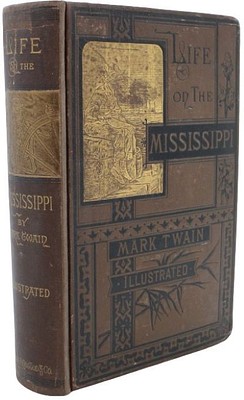Jacques Bellin Map of New England 1757
About Seller
522 South Pineapple Avenue
Sarasota, FL 34236
United States
Sarasota Estate Auction specializes in a wide variety of furniture, antiques, fine art, lighting, sculptures, and collectibles. Andrew Ford, owner and operator of the company, has a passion for finding the best pieces of art and antiques and sharing those finds with the Gulf Coast of Florida.
Two ways to bid:
- Leave a max absentee bid and the platform will bid on your behalf up to your maximum bid during the live auction.
- Bid live during the auction and your bids will be submitted real-time to the auctioneer.
Bid Increments
| Price | Bid Increment |
|---|---|
| $0 | $10 |
| $100 | $25 |
| $250 | $50 |
| $1,000 | $100 |
| $2,500 | $250 |
| $7,500 | $500 |
| $20,000 | $1,000 |
| $50,000 | $2,500 |
| $100,000 | $5,000 |
| $250,000 | $10,000 |
About Auction
Aug 5, 2023
Featuring a Lifetime Collection of Early American Pottery, a Fantastic Georg Jensen Sterling Tea Set - 23 OZT, Important Books and Ephemera, and Exquisite Estate Jewelry. Also including art from artists including Roy Lichtenstein, Camille Pissarro, Karel Appel, Victor Vasarely, and many more. Sarasota Estate Auction sarasotaestateauction@gmail.com
- Lot Description
This is a 1757 French map by Jacques Bellin titled “Carte De La Nouvelle Angleterre, Nouvelle Yorck, Et Pensilvanie. Pour servir a l’Histoire Générale des Voyages. Echelle de Lieues communes de France. Par M. B. Ing. de la Mare. 1767”, and marked “Tom. XIV in 4o. No. g” in the lower left margin and “Tom. 14 in. 8o. Page 97” in the lower right margin. The map is in black and white and titled in the cartouche on the lower right, and it shows the New England colonies, New York, Pennsylvania and New Jersey during the French and Indian War; it also encompasses Connecticut, Rhode Island, New Hampshire and the Province of Maine, and it extends far enough northwest to include the Appalachian Mountains, Lake Erie and Ontario. All the names are in French, and there are French villages identified to the west of the Susquehanna River - the presence of these villages highlights the French intention to occupy western Pennsylvania, one of the catalysts that led to the outbreak of the French and Indian War. Native American tribes and settlements are also identified, including the Iroquois Nations, while others are simply called villages savages - savage villages - and the map includes a number of towns and cities such as Philadelphia, Albany, Plymouth, Boston and Salem, to name a few. In upstate New York, where war between the French and British was in full swing, you can find many French and English forts of great historical significance, including Fort Niagara, Fort Anne, Fort Edward, Fort Frederick, and Fort Carillon, which today is more commonly known as Fort Ticonderoga. The map was drawn by Jacques Nicolas Bellin and published in Abbe Prevost’s L’Histoire Generale des Voyages. Bellin (1703 - 1772) was one of the most important mapmakers of the eighteenth century. In 1721, at the age of 18, he was appointed Hydrographer to the French Navy, and twenty years later, he was named Official Hydrographer of the French King. During his term as Official Hydrographer, his office was the one of the most active centers for the production of sea charts and maps in Europe; it came out with a sea atlas of France, the Neptune Francois, and a number of sea atlases of the world, including the Atlas Maritime and the Hydrographie Francaise, and Bellin produced smaller format maps such as the 1764 Petit Atlas Maritime, which contained 580 finely-detailed charts, and besides this map of New England, he contributed other maps to the fifteen-volume Histoire Generale des Voyages of Abbe Prévost. Bellin was considered a transitional map maker: his work focused on function and accuracy rather than the more decorative elements of previous centuries, and he always cited his references, which was a big step forward in the eighteenth century. The map measures 9 7/8 x 12 3/8 in. wide, with clear printing, light soiling in the bottom margin, and a corner piece missing in the lower left, and a map of New England during the French and Indian War by one of the most important cartographers of the 1700’s.
- Shipping Info
-
SHIPPING INFORMATION·
Sarasota Estate Auction IS NOT RESPONSIBLE FOR SHIPPING. All shipping will be handled by the winning bidder. Sarasota Estate Auction recommends obtaining shipping quotes before bidding on any items in our auctions. If you are interested in obtaining any information on local shippers, please send us an email and we will kindly send you a list of local shippers. Refunds are not offered under any circumstances base on shipping issues, this is up to the buyer to arrange this beforehand.
Premier Shipping, info@premiershipment.com
-
- Payment & Auction Policies
-
Available payment options
We accept all major credit cards, wire transfers, money orders, checks and PayPal. Please give us a call at (941) 359-8700 or email us at SarasotaEstateAuction@gmail.com to take care of your payments.
-
- Buyer's Premium



 EUR
EUR CAD
CAD AUD
AUD GBP
GBP MXN
MXN HKD
HKD CNY
CNY MYR
MYR SEK
SEK SGD
SGD CHF
CHF THB
THB






















